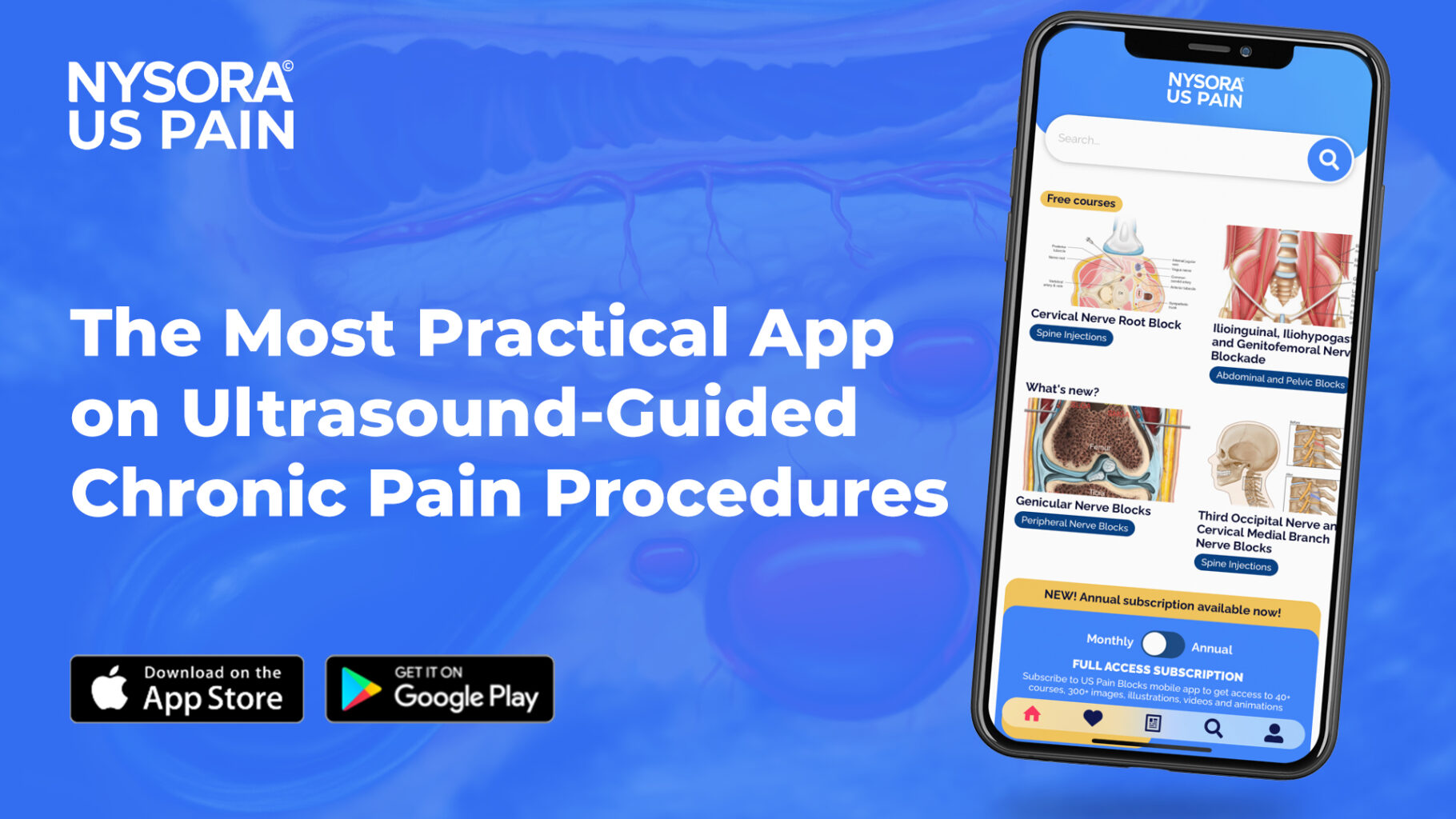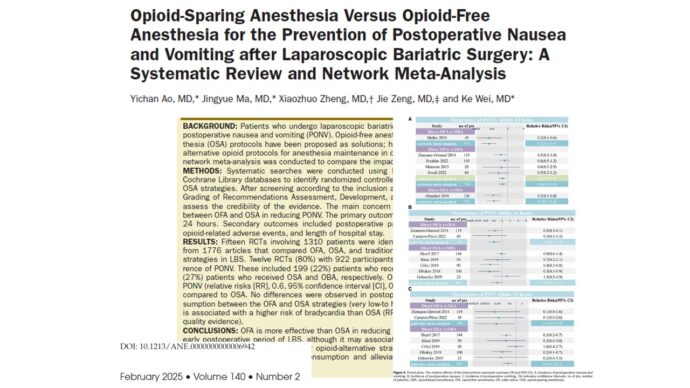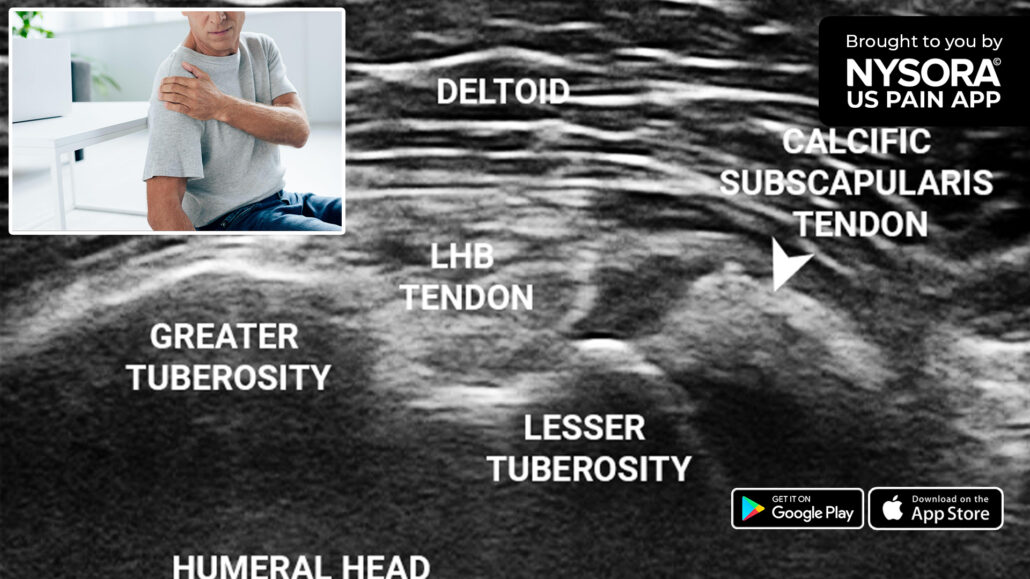
Case study: Calcific tendinitis – Barbotage
A 60-year-old male came in with acute shoulder pain that has been especially severe at night for the past week. Despite taking NSAIDs, he experienced no alleviation. He has diabetes, which is well-managed, and there is no previous record of shoulder injuries or any other trauma.
Physical examination
- The pain presented over the supraspinous fossa and deltoid muscle
- Movement was severely limited due to the pain
- Painful arc present
- Neer’s test: Positive
- Painful anteromedial shoulder on internal rotation
Ultrasound findings
- Slightly solid appearing calcification of the subscapularis tendon
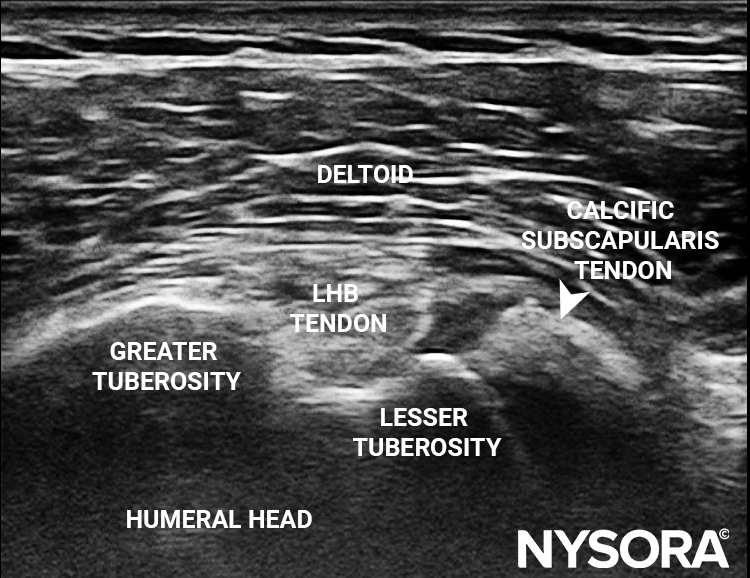
Axial view of the shoulder showing a calcific subscapularis tendon.
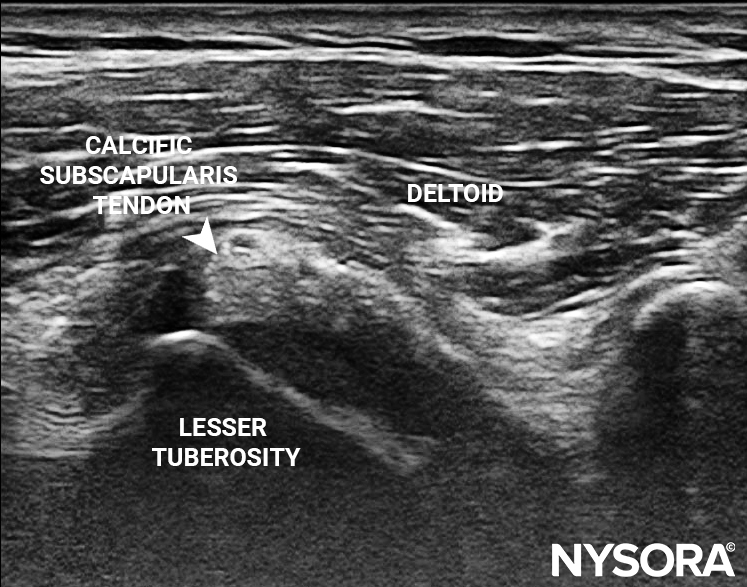
Axial view of the shoulder in external rotation showing a slightly solid calcification of the subscapularis tendon at the insertion onto the lesser tuberosity.
Before planning an intervention, such as a barbotage, thorough anteroposterior imaging is needed to evaluate the feasibility of a barbotage.
- A hard calcification will cast an acoustic shadow and may not be suitable for barbotage.
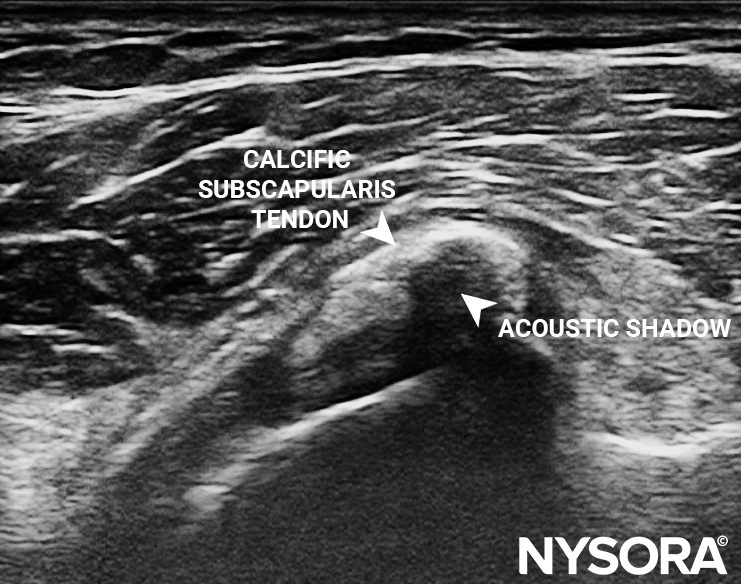
Anteroposterior imaging of a calcific subscapularis tendon revealing an acoustic shadow, indicating a hard calcification.
- A calcification 1 cm in size, slightly solid in appearance and not casting an acoustic shadow is eligible for barbotage.
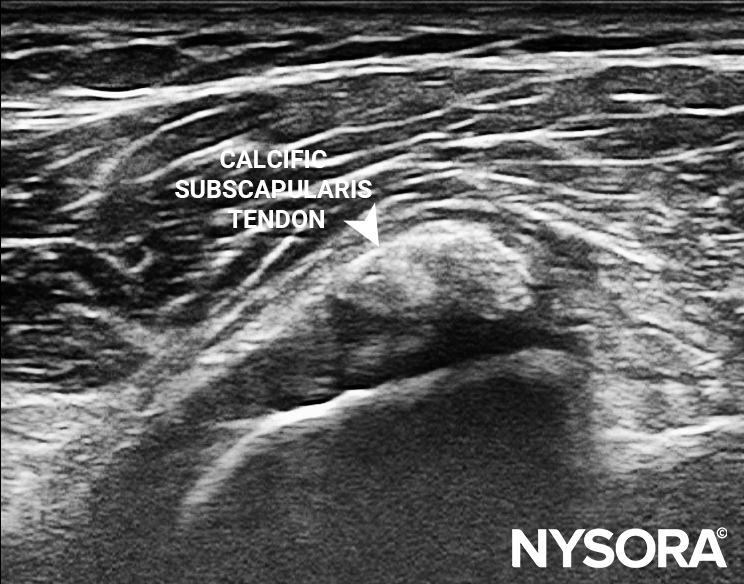
Anteroposterior imaging of a calcific subscapularis tendon revealing a slightly solid appearing calcification.
Diagnosis
The patient was diagnosed with calcific tendinitis of the subscapularis tendon. Calcific tendinitis of the shoulder results from the deposition of calcium phosphate crystals in the rotator cuff tendons. Symptoms include sudden onset of shoulder pain, exacerbated pain when moving the shoulder, discomfort at night, and restricted shoulder mobility.
Discover more about the treatment strategy, patient outcome, and other unique case studies in the US Pain App. Ready to expand your knowledge? Click HERE and get the ultimate app for chronic pain procedures.
